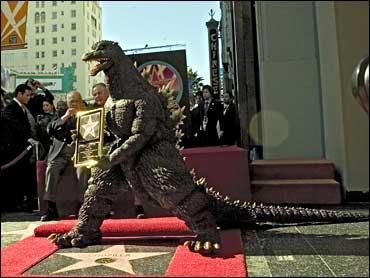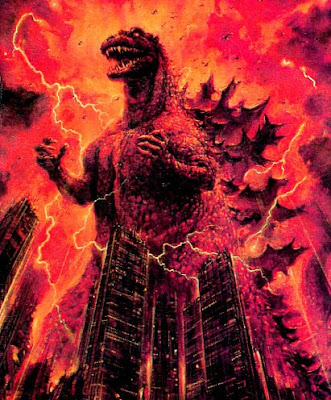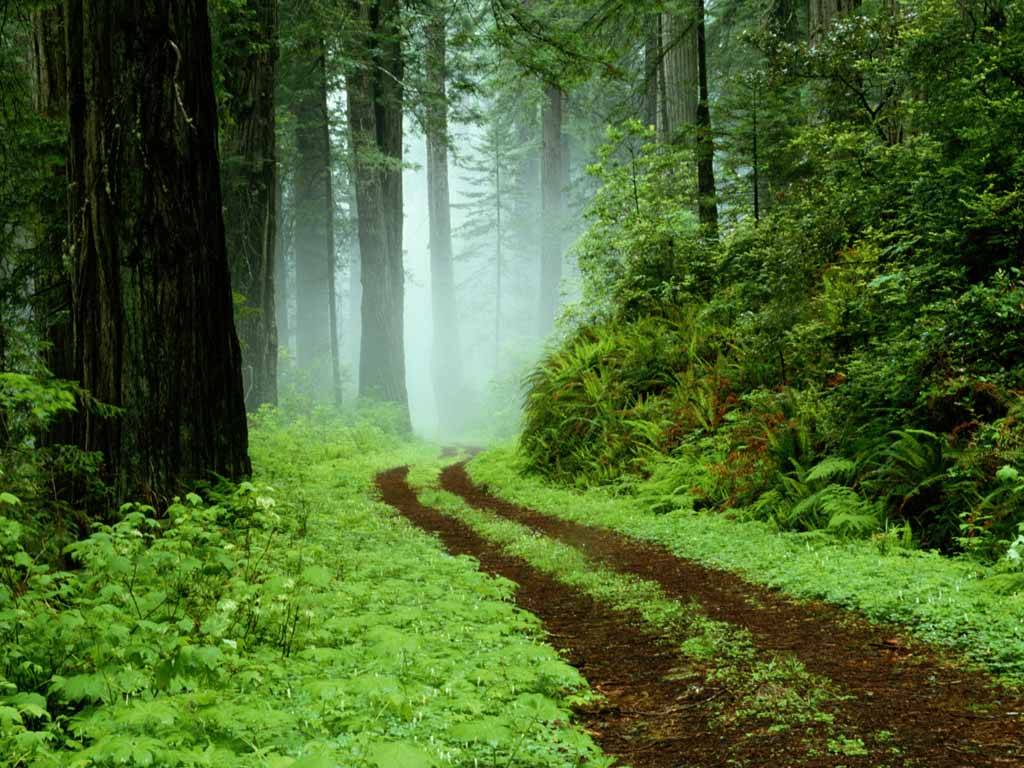Godzilla Gojira) is a daikaijū, a Japanese movie monster, first appearing in Ishirō Honda's 1954 film Godzilla. Since then, Godzilla has gone on to become a worldwide pop culture icon starring in 28 films produced by Toho Co., Ltd. The monster has appeared in numerous other media incarnations including video games, novels, comic books, television series, and an American remake. Another separate American remake is currently in production by Legendary Pictures.
With the bombings of Hiroshima and Nagasaki still fresh in the Japanese consciousness, Godzilla was conceived as a monster created by nuclear detonations and a metaphor for nuclear weapons in general. As the film series expanded, the stories took on less serious undertones portraying Godzilla in the role of a hero, while later movies returned to depicting the character as a destructive monster.
Name
Gojira (ゴジラ?) is a combination of two Japanese words: gorira (ゴリラ?, "gorilla"), and kujira (鯨(クジラ)?, "whale"), which is fitting because in one planning stage, Godzilla was described as "a cross between a gorilla and a whale",[5] alluding to his size, power and aquatic origin. A popular story is that "Gojira" was actually the nickname of a hulking stagehand at Toho Studio.[6] The story has not been verified, however, because in the fifty years since the film's original release, no one claiming to be the employee has ever stepped forward and no photographs have ever surfaced. Kimi Honda (the widow of Ishiro Honda) always suspected that the man never existed as she mentioned in a 1998 interview that "the backstage boys at Toho loved to joke around with tall stories".[7]
Godzilla's name was written in man'yōgana as Gojira (呉爾羅?), thus the kanji used were for phonetic value and not for meaning. Many Japanese books on Godzilla have referenced this curious fact, including B Media Books Special: Gojira Gahô, published by Take-Shobo in three different editions (1993, 1998,[8] and 1999).
The Japanese pronunciation of the name is [ɡodʑiɽa] ( listen); the Anglicized form is /ɡɒdˈzɪlə/, with the first syllable pronounced like the word "god", and the rest rhyming with "gorilla". When Godzilla was created (and Japanese-to-English transliteration was less familiar), it is likely that the kana representing the second syllable was misinterpreted[citation needed] as [dzi]; in the Hepburn romanization system, Godzilla's name would have been rendered as "Gojira", whereas in the Kunrei romanization system it would have been rendered as "Gozira".
Attributes
Main article: Powers and abilities of Godzilla
Godzilla's appearance has changed over the years, but many of his characteristics have remained constant. His roar has remained the same, only changing in pitch. Godzilla's approximate appearance, regardless of the design of the suit utilized for the creature, remains the same general shape, which is instantly recognizable: a giant, mutant dinosaur with rough, bumpy charcoal-gray scales, a long powerful tail, and jagged, bone-colored dorsal fins. Godzilla's iconic character design is a blended chimera inspired by various prehistoric reptiles, gleaned from children's dinosaur books and illustrations from an issue of Life magazine: Godzilla has the head and lower body of a Tyrannosaurus, a triple row of dorsal plates reminiscent of a Stegosaurus, the neck and forearms of Iguanodon and the tail and skin texture of a crocodile.[9][10] Godzilla's dorsal plates have themselves altered in size and appearance over the years.
Godzilla's body and facial structure changed often from film to film. The first films depicted the creature with a more feral head and facial structure, to indicate his status as a feared threat. As the character became more of a heroic figure—particularly to children, who became a large part of Godzilla's target audience from 1965 until 1978 in the Showa era—the creature's shown as having human or near-human intelligence in most films. Godzilla was originally believed by many to be green when the original black and white film was produced, and promotional artwork in America and other English speaking countries depicted him as such. The creature was also depicted as being green in the Hanna-Barbera cartoon and a number of toys in the United States prior to the Trendmasters toy line, which depicted Godzilla in his actual coloration. Godzilla actually has a greenish hue in Godzilla 2000 and again in Godzilla vs. Megaguirus, but returns to his classic charcoal gray in subsequent films in the Millennium series starting with Godzilla, Mothra and King Ghidorah: Giant Monsters All-Out Attack.
Although his origins vary somewhat from film to film, he is always described as a prehistoric creature, who first appeared and attacked Japan at the beginning of the Atomic Age. In particular, mutation due to atomic radiation is presented as an explanation for his size and powers. The most notable of Godzilla's resulting abilities is his atomic breath: a powerful heat ray of fire from his mouth. Godzilla is also depicted as being resistant to damage thanks to a tough hide and an advanced healing factor, which itself became a focal point in Godzilla vs. Biollante and Godzilla 2000. He is portrayed as being strong and dexterous, sometimes utilizing martial arts techniques in combat. Described as a transitional form between aquatic and terrestrial vertebrates in the original film, Godzilla is able to survive in the ocean for indefinite periods of time and is as adept a fighter underwater as he is on land.

godzilla pictures

godzilla pictures

American films
Main articles: Godzilla (1998 film) and Godzilla (2012 film)
In 1998, TriStar Pictures produced a remake that was released between the Heisei and Millennium series. Directed by Roland Emmerich and starring Matthew Broderick, the film - Godzilla - takes place in New York City and has no continuity to any of Toho's productions. Despite negative to mixed reviews from film critics and a negative reception from fans of the original Japanese Godzilla,[citation needed] the film was a financial success, taking in nearly $380 million worldwide, and spawned an animated television series called Godzilla: The Series, which drew much better reception all-around.[citation needed] Toho would later reclassify the Godzilla in this movie as Zilla, and feature it briefly in their film Godzilla: Final Wars. Production members[who?] of Final Wars stated in this American incarnation did not merit having "God" in the name.[citation needed]
For release in 2012, Legendary Pictures acquired the rights to the character with plans to produce a new American Godzilla movie.[11] Producers of the new film will be Dan Lin, Roy Lee, and Brian Rogers while Yoshimitsu Banno, Kenji Okuhira, and Doug Davison will be executive producers.[12] Very little is known about the project so far. At the 2010 San Diego Comic Con, Legendary Pictures representatives were on hand to pass out t-shirts depicting a new Godzilla design. On January 4th, 2011, Gareth Edwards was announced as director. The original script writer David Callaham has been replaced by a new yet-to-be-announced writer

godzilla pictures

godzilla pictures

godzilla most dangerous pictures

godzilla most dangerous pictures
 godzilla pictures
godzilla pictures
godzilla pictures


godzilla pictures

godzilla pictures

godzilla pictures

godzilla pictures

godzilla pictures
 forest wallpapers
forest wallpapers forest wallpapers
forest wallpapers forest wallpapers
forest wallpapers forest wallpapers
forest wallpapers forest wallpapers
forest wallpapers forest wallpapers
forest wallpapers forest wallpapers
forest wallpapers
 forest wallpapers
forest wallpapers forest wallpapers
forest wallpapers forest wallpapers
forest wallpapers forest wallpapers
forest wallpapers forest wallpapers
forest wallpapers forest wallpapers
forest wallpapers forest wallpapers
forest wallpapers
 african wild dog
african wild dog african wild dog
african wild dog african wild dog
african wild dog african wild dog
african wild dog african wild dog
african wild dog african wild dog
african wild dog african wild dog
african wild dog african wild dog
african wild dog
 wildlife animals
wildlife animals wildlife animals
wildlife animals wildlife animals
wildlife animals wildlife animals
wildlife animals wildlife animals
wildlife animals wildlife animals
wildlife animals wildlife animals
wildlife animals wildlife animals
wildlife animals wildlife animals
wildlife animals wildlife animals
wildlife animals wildlife animals
wildlife animals wildlife animals
wildlife animals wildlife animals
wildlife animals wildlife animals
wildlife animals wildlife animals
wildlife animals
 godzilla pictures
godzilla pictures godzilla pictures
godzilla pictures American films
American films godzilla pictures
godzilla pictures godzilla most dangerous pictures
godzilla most dangerous pictures godzilla most dangerous pictures
godzilla most dangerous pictures godzilla pictures
godzilla pictures godzilla pictures
godzilla pictures
 godzilla pictures
godzilla pictures godzilla pictures
godzilla pictures godzilla pictures
godzilla pictures godzilla pictures
godzilla pictures godzilla pictures
godzilla pictures